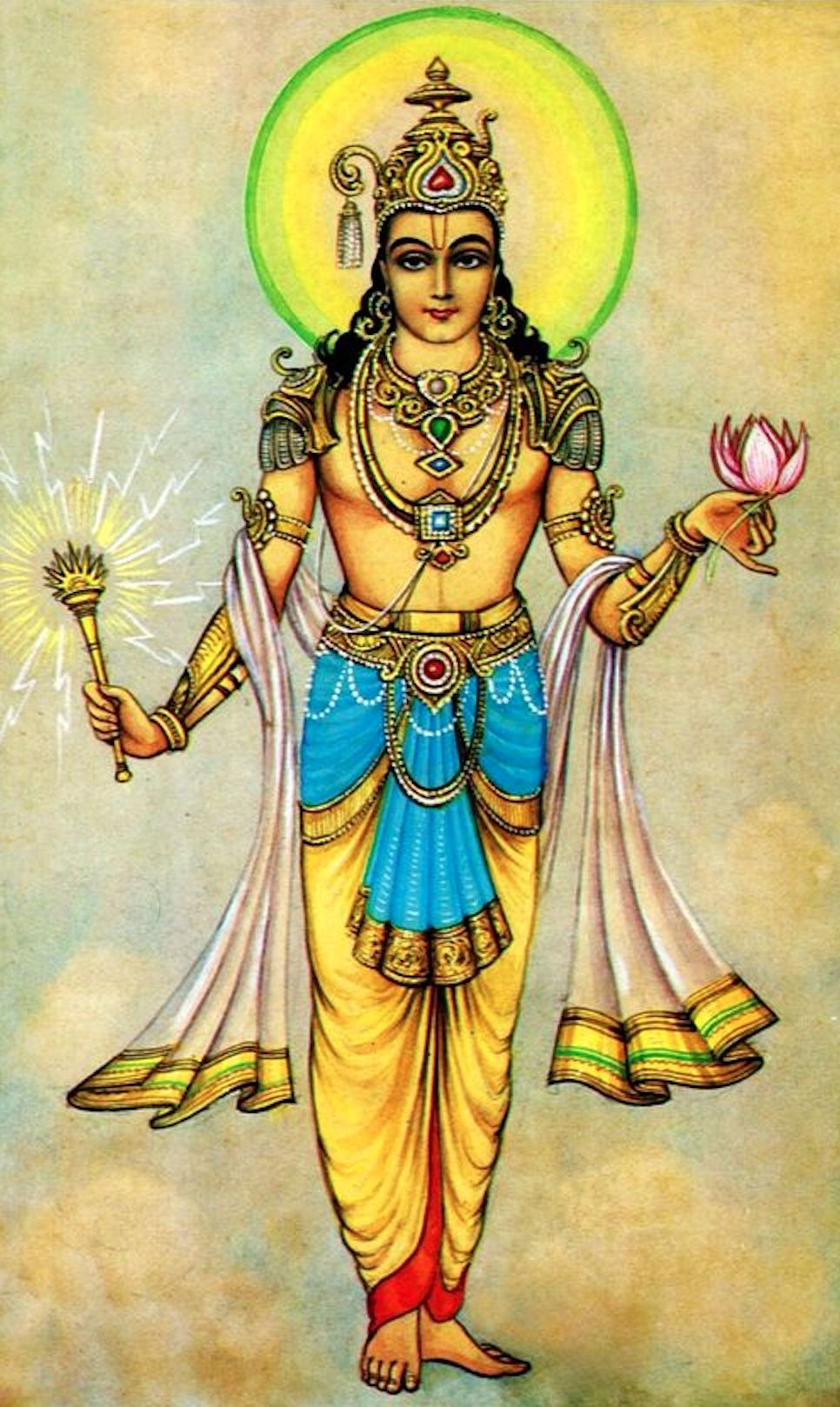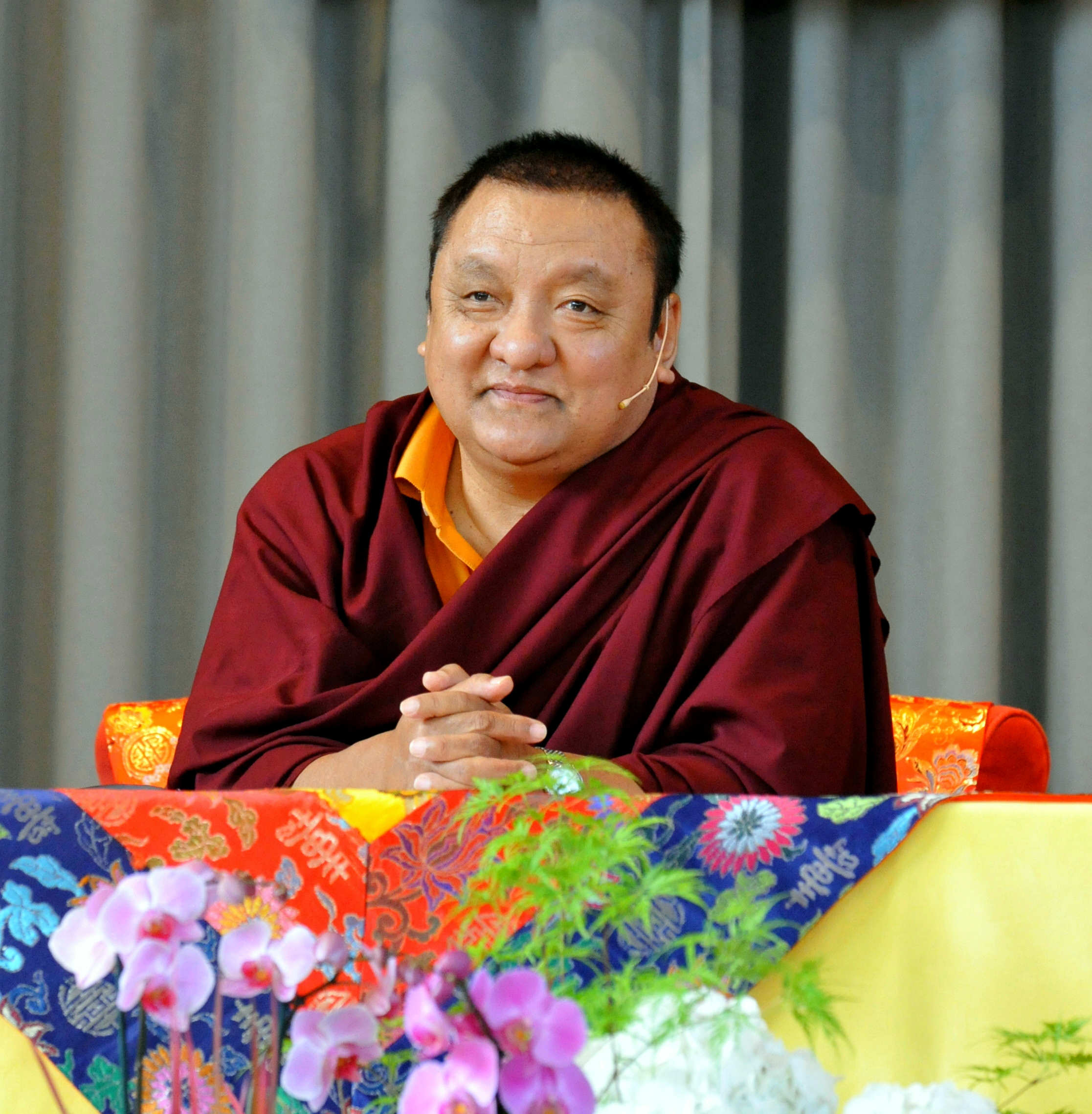|
Mikyö Dorje, 8th Karmapa Lama
Mikyö Dorje (, 1507–1554) was the eighth Karmapa, head of the Kagyu school of Tibetan Buddhism. Biography Mikyö Dorje was born in Satam, Kham. According to the legend, he said after being born: "I am Karmapa." and was recognized by Tai Situpa. In this case there was another child from Amdo who also claimed to be KarmapaGyaltsab Rinpoche the regent of the region, thought of a test to decide who was the real Karmapa. This was the first time that a test was used to determine a reincarnation. Later this became the standard method for all major lamas. Mikyö Dorje left numerous Buddhist writings on Gongchik commentary Madhyamaka, Abhidharma, Tantric and Mahamudra texts, poetry (verses of profound wisdom) and even linguistics. He introduced special guru yoga in four sessions, which is the basis for Karma Kagyu teachings. He was also a skillful painter and metal craftsman with many famous thangkas and statues. The eighth Karmapa strongly influenced all arts of his time. He was i ... [...More Info...] [...Related Items...] OR: [Wikipedia] [Google] [Baidu] |
Thangka
A ''thangka'', variously spelled as ''thangka'', ''tangka'', ''thanka'', or ''tanka'' (; Tibetan: ཐང་ཀ་; Nepal Bhasa: पौभा), is a Tibetan Buddhist painting on cotton, silk appliqué, usually depicting a Buddhist deity, scene, or mandala. Thangkas are traditionally kept unframed and rolled up when not on display, mounted on a textile backing somewhat in the style of Chinese scroll paintings, with a further silk cover on the front. So treated, thangkas can last a long time, but because of their delicate nature, they have to be kept in dry places where moisture will not affect the quality of the silk. Most thangkas are relatively small, comparable in size to a Western half-length portrait, but some are extremely large, several metres in each dimension; these were designed to be displayed, typically for very brief periods on a monastery wall, as part of religious festivals. Most thangkas were intended for personal meditation or instruction of monastic students. T ... [...More Info...] [...Related Items...] OR: [Wikipedia] [Google] [Baidu] |
16th-century Tibetan People
The 16th century begins with the Julian year 1501 ( MDI) and ends with either the Julian or the Gregorian year 1600 ( MDC) (depending on the reckoning used; the Gregorian calendar introduced a lapse of 10 days in October 1582). The 16th century is regarded by historians as the century which saw the rise of Western civilization and the Islamic gunpowder empires. The Renaissance in Italy and Europe saw the emergence of important artists, authors and scientists, and led to the foundation of important subjects which include accounting and political science. Copernicus proposed the heliocentric universe, which was met with strong resistance, and Tycho Brahe refuted the theory of celestial spheres through observational measurement of the 1572 appearance of a Milky Way supernova. These events directly challenged the long-held notion of an immutable universe supported by Ptolemy and Aristotle, and led to major revolutions in astronomy and science. Galileo Galilei became a champion ... [...More Info...] [...Related Items...] OR: [Wikipedia] [Google] [Baidu] |
1554 Deaths
__NOTOC__ Year 1554 ( MDLIV) was a common year starting on Monday (link will display the full calendar) of the Julian calendar. Events January–June * January 5 – A great fire breaks out in Eindhoven, Netherlands. *January 11 – A Spanish army is defeated by local Mapuche-Huilliches as it tries to cross Bueno River in Southern Chile. * January 12 – Bayinnaung is crowned king of the Burmese Taungoo Dynasty. * January 25 – São Paulo, Brazil, is founded. * February 9 – Thomas Wyatt surrenders to government forces in London. * February 12 – After claiming the throne of England the previous year, Lady Jane Grey is beheaded for treason. * March 18 – Princess Elizabeth is imprisoned in the Tower of London. * April 12 – Mary of Guise becomes Regent of Scotland. July–December * July 23– 25 – Queen Mary I of England marries King Philip of Naples, the only son of Charles V, Holy Roman Emperor, ... [...More Info...] [...Related Items...] OR: [Wikipedia] [Google] [Baidu] |
1507 Births
Fifteen or 15 may refer to: * 15 (number), the natural number following 14 and preceding 16 *one of the years 15 BC, AD 15, 1915, 2015 Music * Fifteen (band), a punk rock band Albums * ''15'' (Buckcherry album), 2005 * ''15'' (Ani Lorak album), 2007 * ''15'' (Phatfish album), 2008 * ''15'' (mixtape), a 2018 mixtape by Bhad Bhabie * ''Fifteen'' (Green River Ordinance album), 2016 * ''Fifteen'' (The Wailin' Jennys album), 2017 * ''Fifteen'', a 2012 album by Colin James Songs * "Fifteen" (song), a 2008 song by Taylor Swift *"Fifteen", a song by Harry Belafonte from the album '' Love Is a Gentle Thing'' *"15", a song by Rilo Kiley from the album '' Under the Blacklight'' *"15", a song by Marilyn Manson from the album ''The High End of Low'' *" The 15th", a 1979 song by Wire Other uses *Fifteen, Ohio, a community in the United States * ''15'' (film), a 2003 Singaporean film * ''Fifteen'' (TV series), international release name of ''Hillside'', a Canadian-American teen drama ... [...More Info...] [...Related Items...] OR: [Wikipedia] [Google] [Baidu] |
16th-century Lamas
The 16th century begins with the Julian year 1501 ( MDI) and ends with either the Julian or the Gregorian year 1600 ( MDC) (depending on the reckoning used; the Gregorian calendar introduced a lapse of 10 days in October 1582). The 16th century is regarded by historians as the century which saw the rise of Western civilization and the Islamic gunpowder empires. The Renaissance in Italy and Europe saw the emergence of important artists, authors and scientists, and led to the foundation of important subjects which include accounting and political science. Copernicus proposed the heliocentric universe, which was met with strong resistance, and Tycho Brahe refuted the theory of celestial spheres through observational measurement of the 1572 appearance of a Milky Way supernova. These events directly challenged the long-held notion of an immutable universe supported by Ptolemy and Aristotle, and led to major revolutions in astronomy and science. Galileo Galilei became a champion o ... [...More Info...] [...Related Items...] OR: [Wikipedia] [Google] [Baidu] |
Wangchuk Dorje
Wangchuk Dorje (1556–1603) was the ninth Gyalwa Karmapa, head of the Kagyu School of Tibetan Buddhism. Wangchuk Dorje was born in Treshod, Kham. According to legend, he said after being born: "I am Karmapa." Other sources say that soon after his birth he sat cross-legged for three days and declared he was the Karmapa. He received his education from Shamar Köncho Yenlak, the fifth Shamarpa, in a nomadic camp which traveled through Tibet but also passed through present day Mongolia and Bhutan. During his travels many monasteries were founded. Wangchuk Dorje also wrote many classic Buddhist texts, many of which are still being taught todaBiography of the 9th Karmapa Wangchuk Dorje was not only a spiritual leader, but also a mediator in conflicts. He was invited by the king of Sikkim to settle a dispute and while there he founded three monasteries one of them being in Rumtek which is currently the most important monastery of the lineage after the Chinese occupation of Tibet. The ... [...More Info...] [...Related Items...] OR: [Wikipedia] [Google] [Baidu] |
Dorje Pakmo
The Vajra () is a legendary and ritual weapon, symbolising the properties of a diamond (indestructibility) and a thunderbolt (irresistible force). The vajra is a type of club with a ribbed spherical head. The ribs may meet in a ball-shaped top, or they may be separate and end in sharp points with which to stab. The vajra is the weapon of Indra, the Vedic king of the devas and heaven. It is used symbolically by the dharmic traditions of Hinduism, Buddhism, and Jainism, often to represent firmness of spirit and spiritual power. According to Hinduism, the vajra is considered one of the most powerful weapons in the universe. The use of the vajra as a symbolic and ritual tool spread from Hinduism to other religions in India and other parts of Asia. Etymology According to Asko Parpola, the Sanskrit () and Avestan both refer to a weapon of the Godhead, and are possibly from the Proto-Indo-European root ''*weg'-'' which means "to be(come) powerful". It is related to ... [...More Info...] [...Related Items...] OR: [Wikipedia] [Google] [Baidu] |
Mindstream
Mindstream (''citta-santāna'') in Buddhist philosophy is the moment-to-moment continuum (Sanskrit: ''saṃtāna'') of sense impressions and mental phenomena, which is also described as continuing from one life to another. Definition ' (Sanskrit), literally "the stream of mind", is the stream of succeeding moments of mind or awareness. It provides a continuity of the personality in the absence of a permanently abiding "self" ( ātman), which Buddhism denies. The mindstream provides a continuity from one life to another, akin to the flame of a candle which may be passed from one candle to another: William Waldron writes that "Indian Buddhists see the 'evolution' of mind i terms of the continuity of individual mind-streams from one lifetime to the next, with karma as the basic causal mechanism whereby transformations are transmitted from one life to the next." According to Waldron, " e mind stream (''santāna'') increases gradually by the mental afflictions (''kleśa'') and by ac ... [...More Info...] [...Related Items...] OR: [Wikipedia] [Google] [Baidu] |
Shamarpa
The Shamarpa (; literally, "Person (i.e. Holder) of the Red Crown"), also known as ''Shamar Rinpoche'', or more formally Künzig Shamar Rinpoche, is a lineage holder of the Karma Kagyu school of Tibetan Buddhism and is regarded to be the mind manifestation of Amitābha. He is traditionally associated with Yangpachen Monastery near Lhasa. The first Shamarpa, Drakpa Senggé (, 1283–1349), received the title "Shamarpa", and a red crown, an exact replica of Karmapa’s black crown from Rangjung Dorje, 3rd Karmapa, establishing the second line of reincarnate lamas in Tibetan Buddhism. The Karmapa was the first. The Shamarpa is often referred to as the "Red Hat Karmapa", especially in early Kagyu texts. The 5th Dalai Lama saw the Shamarpa as equal to the Karmapa: The Shamarpa lineage Shamarpa considered to be successive reincarnations are listed in "The Garland of Moon Water Crystal" by the 8th Tai Situpa Chökyi Jungne and Belo Tsewang Künkhyab. # Khedrup Drakpa Senge ... [...More Info...] [...Related Items...] OR: [Wikipedia] [Google] [Baidu] |






